Nudis & Sea Slugs
We love macro life and spend most of our time underwater looking for the tiniest of creatures. Finding nudibranchs and sea slugs is a highlight of any dive. They’re absolutely gorgeous with each one having its own colorful, intricate design like someone painstakingly hand-painted each one to make it just right.
(scroll down for pics)
What the heck is a nudibranch?
Nudibranchs, affectionately called “nudis” by their groupies are underwater slugs which sounds much less sexy. They’re gastropods but unlike some other gastropods they don’t have a shell in their adult form. They’re very small, generally 4-10cm with some growing as large as 60cm. Nudis are carnivores and picky ones at that. Each species generally preys on only one or two types of food which is helpful for divers hoping to find one. If you know what they like to eat, start where there’s an abundance of their preferred food. Then prepare to patiently search for them. They’re tiny and can be very difficult to spot despite their bold patterns.
We bought an underwater magnifying glass this past summer, such an awesome purchase! We got ours from a guy in the U.K. who makes them to order. They’re pricey at around $100 each, but oh so worth it to get such a close-up look at these fascinating creatures.

Nudibranch or sea slug?
This one causes a bit of confusion but a good way to remember is this: all nudibranchs are sea slugs but not all sea slugs are nudibranchs. Correctly identifying your find is key. We have the Caribbean Sea Slugs book and also rely on Facebook groups. If you’re in Florida, you’ll find the nudi groupies in the “Nudibranch Hunters of Florida” group. “ID Please” is another great group to join covering all geographic areas.
What’s all the fuss about?
These creatures are simply gorgeous! They’re brilliantly colored with the most intricate of patterns. They’re also somewhat elusive making a find that much more exciting. There are over 3000 known nudibranch species with more being discovered all the time. Here in the Keys, they’re a somewhat rare find. There are a few spots that locals go to “hunt nudis” and by hunt, we’re hunting with cameras, but out on the reef we rarely find them so when we do there’s a lot of screams in regulators 🙂
Now for some pics!
I found this sea goddess on the way back to the boat on a site called the Wellwood in Key Largo. I was ridiculously excited! We didn’t have long with it, we were due back to the boat and it was on the move anyway, retreating into a crevice less than a minute after finding it never to be seen again.
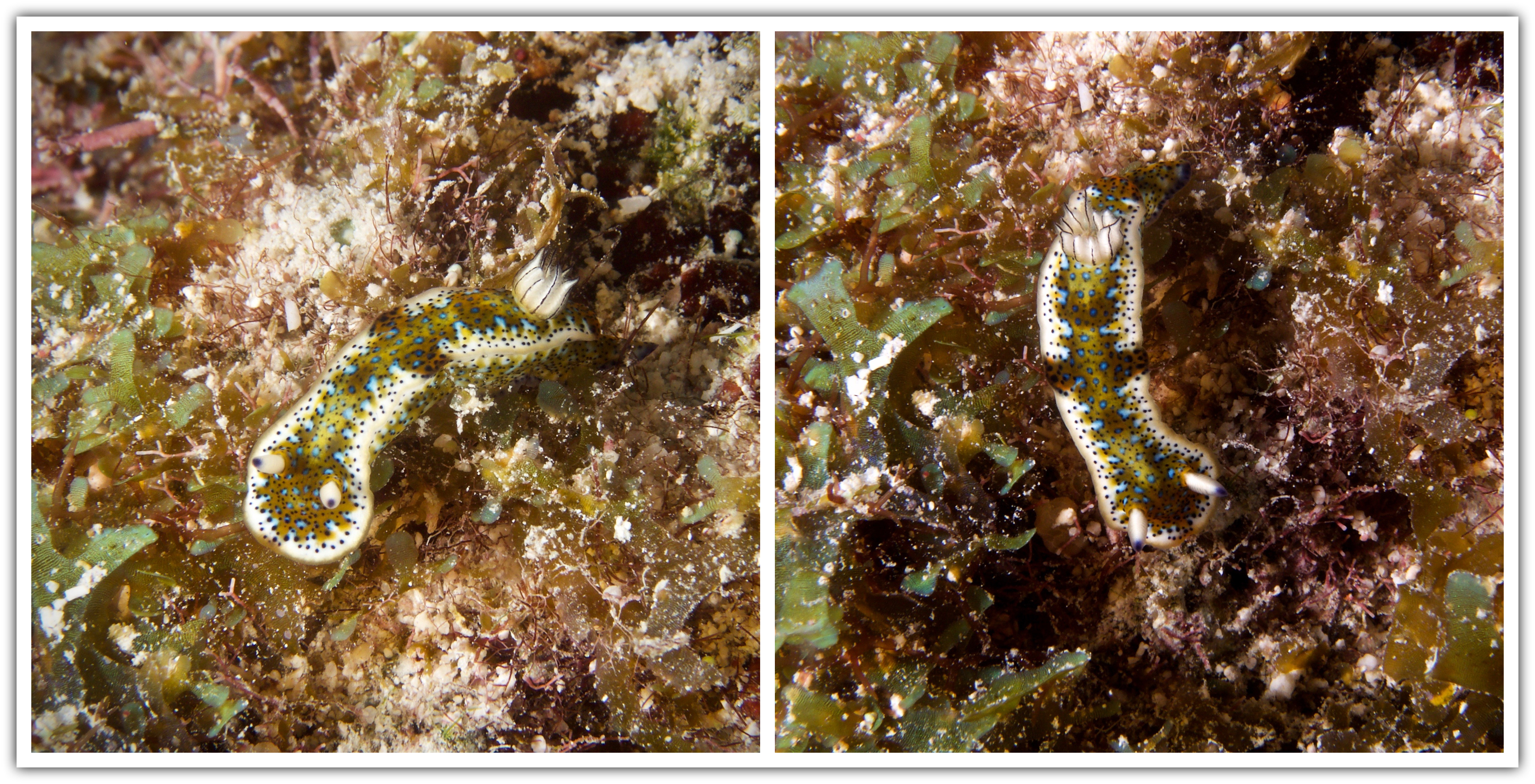
Olga’s Sea Goddess – Wellwood site of Molasses Reef, Key Largo
J found this beauty the minute we dropped down from the boat cruising along the sand, talk about awesome luck! Horseshoe became one of our favorite sites last year due to its variety of habitat. There’s reef, sand, and seagrass beds to explore here. We had great luck on this site last summer including our first pike blenny.
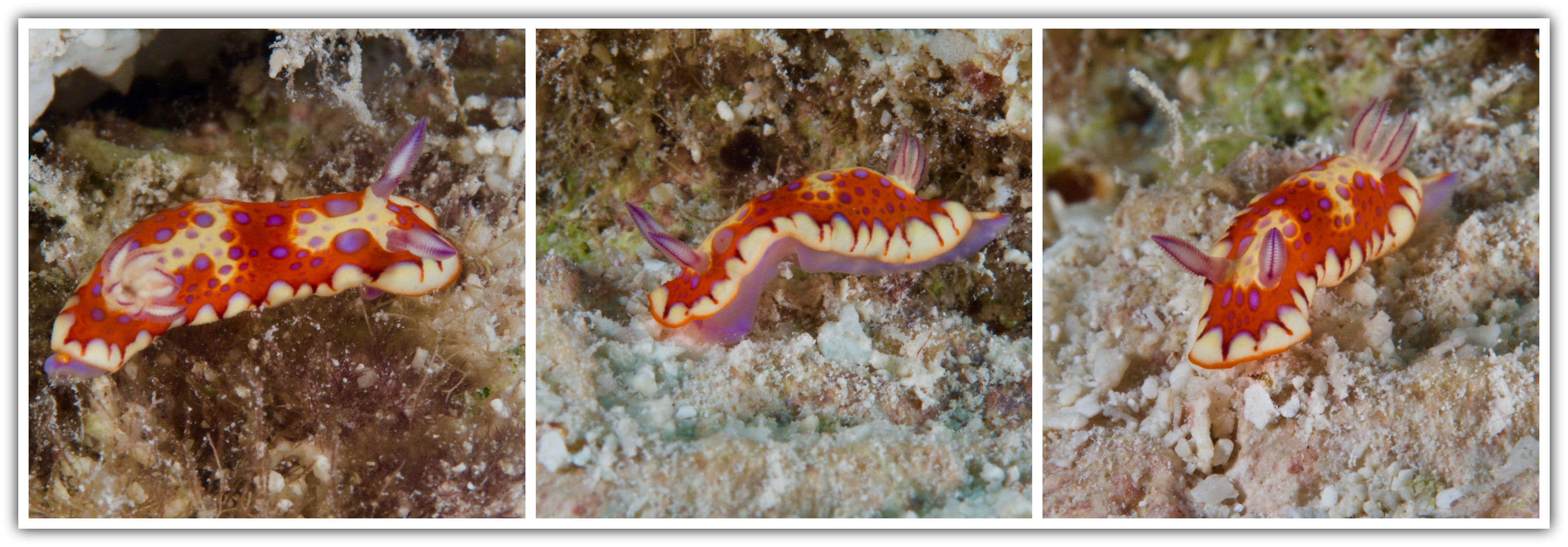
Harlequin Sea Goddess – Horseshoe Reef, Key Largo
I found this dazzling sea goddess a bit by mistake! Again at Horseshoe, I’d just found a juvenile buffalo trunkfish. After getting some pics of it, I handed it off to my dive buddies and swam to a nearby coral head to wait for them and BAM! I was face-to-face with this brilliantly colored nudi. I only had my GoPro with a close-focus lens so not the best pic but a pic nonetheless.

Purple Crowned Sea Goddess – Horseshoe Reef, Key Largo
Tritonias are pretty common here in the Keys. One of their favorite foods is the purple sea fan. Next time you see one of these fans, stop and take a careful look at both sides. They’re very small but are often found in groups which makes them easier to spot.
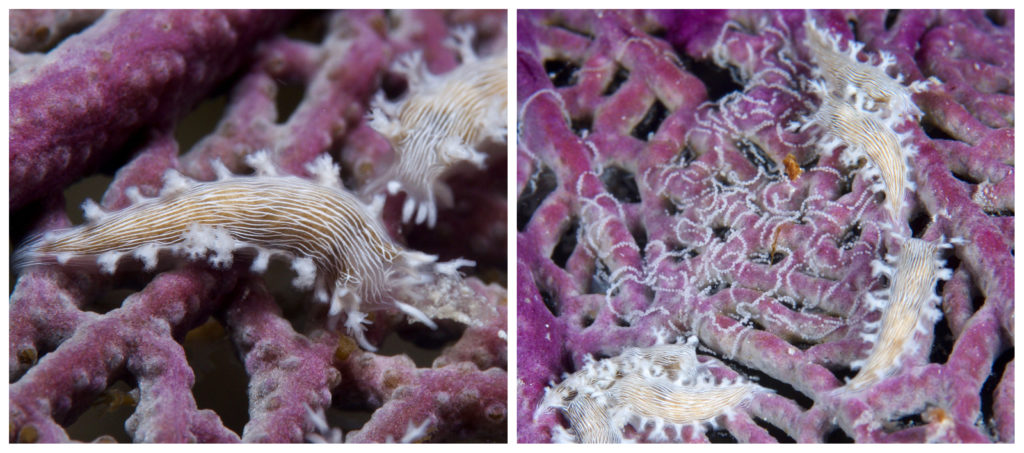
Tritonias on a purple sea fan, Key Largo
J found this flabellina on the Wellwood site in Key Largo. The Wellwood site is a great place to comb for macro life.
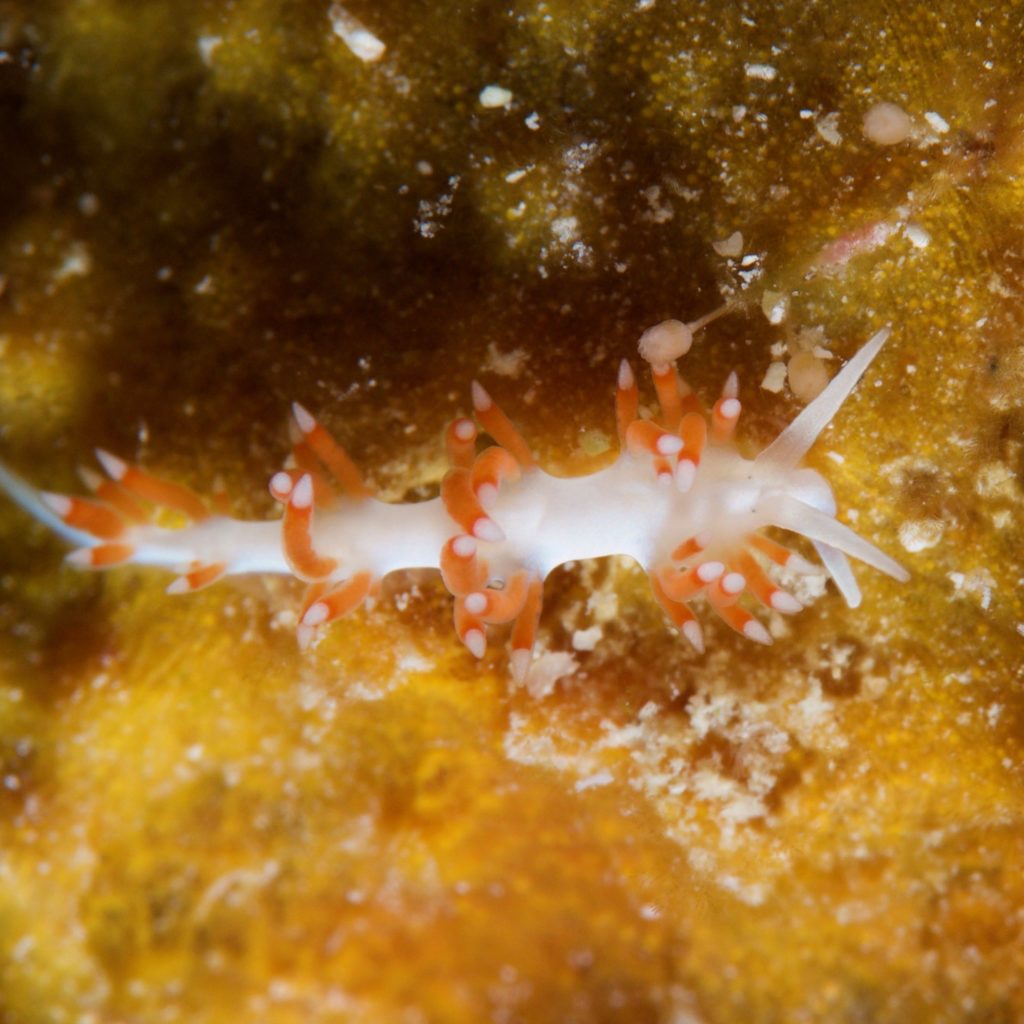
Flabellina – Wellwood, Key Largo
The below are lettuce sea slugs. These are an example of a sea slug that is not a nudibranch. They’re extremely common and come in many color and shape variations. Some are covered in folds whereas others like the one on the bottom left have more of a smooth body fringed by folds. They get fairly large as well making them easier to spot.
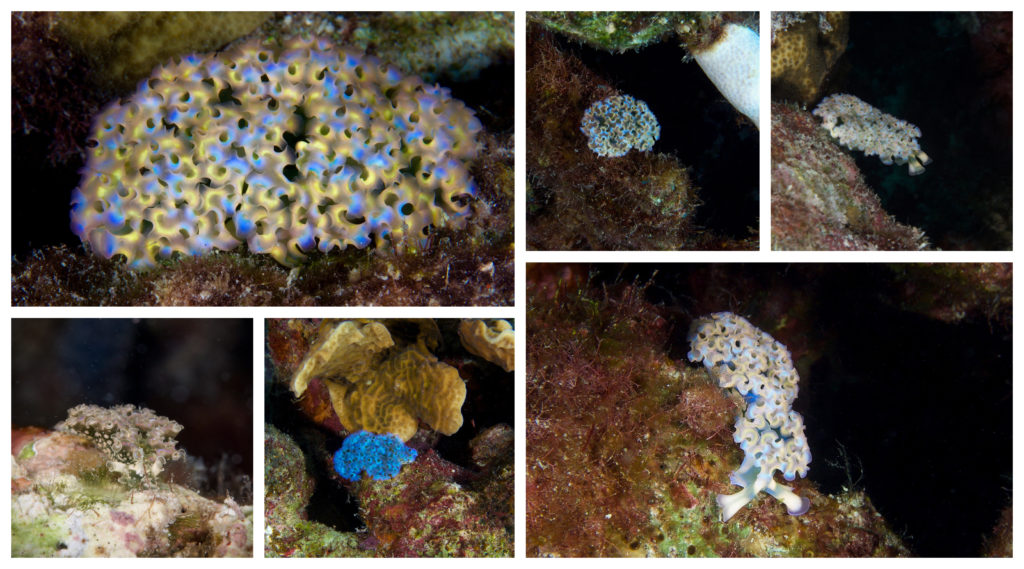
Elysia crispatas or lettuce sea slugs – Key Largo & Bonaire
Happy hunting!
Want to see more of our pics? Follow us on Instagram! GoWhereItsWarmDives
